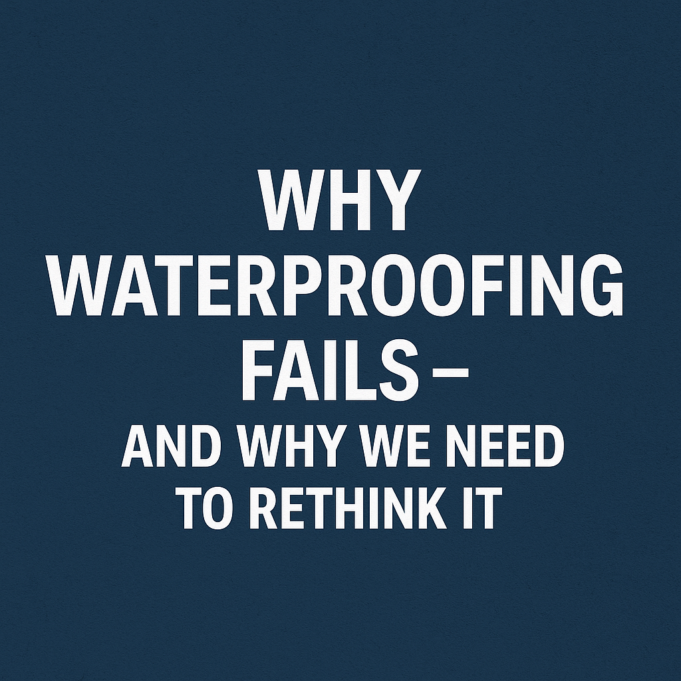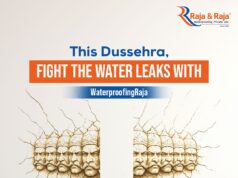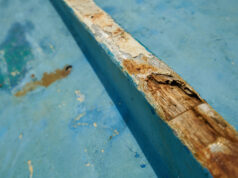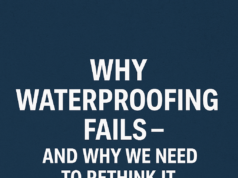“Why do we even need waterproofing – and why does it fail so often?”
This question remains one of the construction industry’s most overlooked yet essential inquiries.
Contrary to popular belief, structures don’t leak simply because they are poorly constructed.
If you look at historic buildings—some over 100, 300, or even 400 years old—they’ve stood the test of time. While many are struggling with maintenance issues today, very few were plagued with leakage in their original lifespans.
So what changed?
Where Modern Construction Misses the Mark
In most contemporary cases, leakage stems from:
- Weak detailing
- Execution lapses
- Poor curing
- Improper sequencing of work
- Incomplete understanding of water behaviour
- And perhaps most often, neglect is in aftercare and maintenance.
So, as a seasoned waterproofer, my investigation always begins with the following:
“Why is this structure leaking?”
And when I ask that, I often encounter these possibilities:
- Poor concrete strength? → ❌ Not really.
- Voids in the concrete? → 🔶 Maybe.
- Lapses in construction quality? → 🔶 Maybe.
- Improper attention to detail? → ✅ Absolutely.
- Incorrect sequencing of Waterproofing works? → 🔶 Often, yes.
- Wrong specifications? → 🤐 Sealed lips.
- Poor quality materials? → ❌ Rarely the case.
- Untrained workmanship? → 🔶 Partly, yes.
- Or something deeper? → 🤔 We’re all still exploring that…
The Materials Have Evolved—But Has the Manpower?
Construction materials have significantly advanced.
We now have high-performance concrete, innovative admixtures, and multi-layered Waterproofing systems.
But here’s the catch:
While the materials have evolved, the skill sets of those applying them have not kept pace.
We still rely on execution teams that:
- Lack of awareness of how these systems work,
- Skip over essential steps due to site pressure,
- Or follow templated instructions without understanding the “why” behind each detail.
Site supervisors, despite their best intentions, are often stretched across projects, racing against tight timelines, limited manpower, and demanding deadlines. In this rush, the fine detailing that makes waterproofing successful is missed.
And when good materials meet poor workmanship, failure is inevitable.
Then Why Do “Waterproofed” Structures Still Leak?
It’s common to see buildings with branded systems and approved materials still suffer from leakage.
So what went wrong?
The material rarely fails.
It’s the detailing and execution that fail.
And when that happens, misdiagnosis often follows.
On top of that, we have the cost-sensitive decision-making of clients.
Everyone seeks “value for money”—and rightly so. But often, the focus shifts to:
- Who presents better?
- Who quotes lower?
- Who promises faster?
And in that process, we fail to ask the most critical question:
“Is this person solving the actual problem—or just covering it up?”
The Real Difference: Treating Symptoms vs. Solving the Root Problem
Let me offer a simple analogy:
Waterproofing is like treating a fever.
You could take paracetamol—your temperature drops, you feel better.
But the infection? It’s still inside. It’ll come back. Stronger. And more resistant.
Now, think of a good doctor.
They won’t just suppress the fever—they’ll run tests, identify the infection, and treat it with the right antibiotic.
A responsible waterproofer must do the same.
They don’t just apply a mastic, membrane, or coating to hide a damp patch.
They inspect, investigate, diagnose the source, and engineer a durable solution.
Masking vs. Diagnosis-Based Waterproofing
What we often see on social media today—shiny coatings, quick fixes, and dramatic “before-after” shots—is like applying a Band-Aid to a pipe leak.
The drip may stop for now.
But the internal corrosion? Still active.
Eventually, it all gives way.
Instead, we must:
✅ Identify the source of ingress
✅ Understand the movement and behaviour of water
✅ Choose materials based on exposure, detailing, and life-cycle
✅ Apply solutions that address the cause, not just the symptom
Only then can we deliver long-term durability and client satisfaction.
Final Thought
We need to STOP treating Waterproofing as just a product.
We must start treating it as a specialized technical service that combines engineering insight, field experience, material science, and accountability.
Because if we continue to prioritize:
- Convenience over clarity,
- Presentation over process,
- And cost over competence…
We’ll keep repeating the same mistakes—project after project, year after year.
It’s time we stop masking leaks.
It’s time we start solving them.
It’s time we Do It Right FIRST Time.




